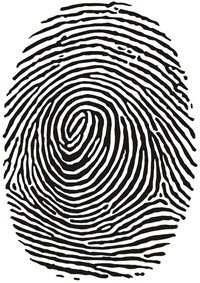The Fingerprint Reader software primarily works by scanning an image of your fingerprint and then saving a registered copy of it. When you sign in to Windows 11/10, the fingerprint reader scans your fingerprint and checks it with the saved version. If it matches, you are allowed to access the system. It’s been observed that the built-in fingerprint reader develops issues when updating drivers or after you upgrade your Windows OS to a newer version. If you face such an issue, then this post may help you troubleshoot the issue.
Fingerprint Reader or Sensor not working in Windows 11/10
To troubleshoot Biometric Device or Fingerprint Reader driver not working, connected, detected problem in Windows 11/10 laptop follow these suggestions:
1] Physically clean the fingerprint reader sensor
First physically clean the fingerprint reader sensor using a tissue or a clean cloth and ensure that your fingerprint reader software is up-to-date. See if it works now.
2] Check if it has been registered correctly
If you use Microsoft Fingerprint Reader software, then this issue could occur if your fingerprint has not been registered correctly or if there is no Windows password for the Windows account. Create a Windows login password via User Accounts. Next, uninstall and then reinstall DigitalPersona Password Manager or your Fingerprint Reader software and register your Fingerprint afresh.
3] Check if it is enabled in BIOS
The Biometric device is a hardware that controls the fingerprint reader. Depending on the model number of your computer, there are options in the BIOS to turn the biometric device on and off. If you need to enable this feature, check your BIOS for biometric support: If a biometric option does not exist in your BIOS, then the fingerprint reader is always enabled.
4] Check Drivers
Although it seems logical and beneficial to update your drivers to keep them in a normal state, sometimes an update can render your fingerprint reader useless. Unless specifically advised or recommended, it is better to ignore any sensor or fingerprint reader driver updates. But if you have updated the drivers and the action has disabled your fingerprint reader, it is advisable to fix this issue by rolling back your drivers to earlier versions. To do this, search for “Device Manager” and open it. Next, locate “Biometric Devices. Expand the list of recognized biometric sensor devices. The fingerprint sensor is listed as a Validity Sensor or AuthenTec Sensor, depending on the model number of your computer.
If there is a Biometric entry, then Windows supports the device. If not, you may need to search for your specific computer’s driver for its fingerprint reader. You can do this with a simple Internet search or look up your computer’s specifications at its manufacturer’s web site. Upon finding the right device, right-click on it and click “Properties.” In the Properties box which opens, click on “Driver” tab. Next, click on “Roll Back Driver” if available. In some cases it will be, in others it won’t. If you do not find the ‘Roll Back’ option, click on “Uninstall.” A pop-up should appear on your computer screen requesting you to confirm the decision. Click the checkbox adjacent to “Delete the driver software for this device,” then OK. Once the driver is uninstalled, turn off your computer. Restart it and open the Device Manager again. Now, right-click on your computer’s name at the very top of the devices list and click “Scan for hardware changes.” The action should select the fingerprint reader and reinstall the original driver for it. Hope this helps.

